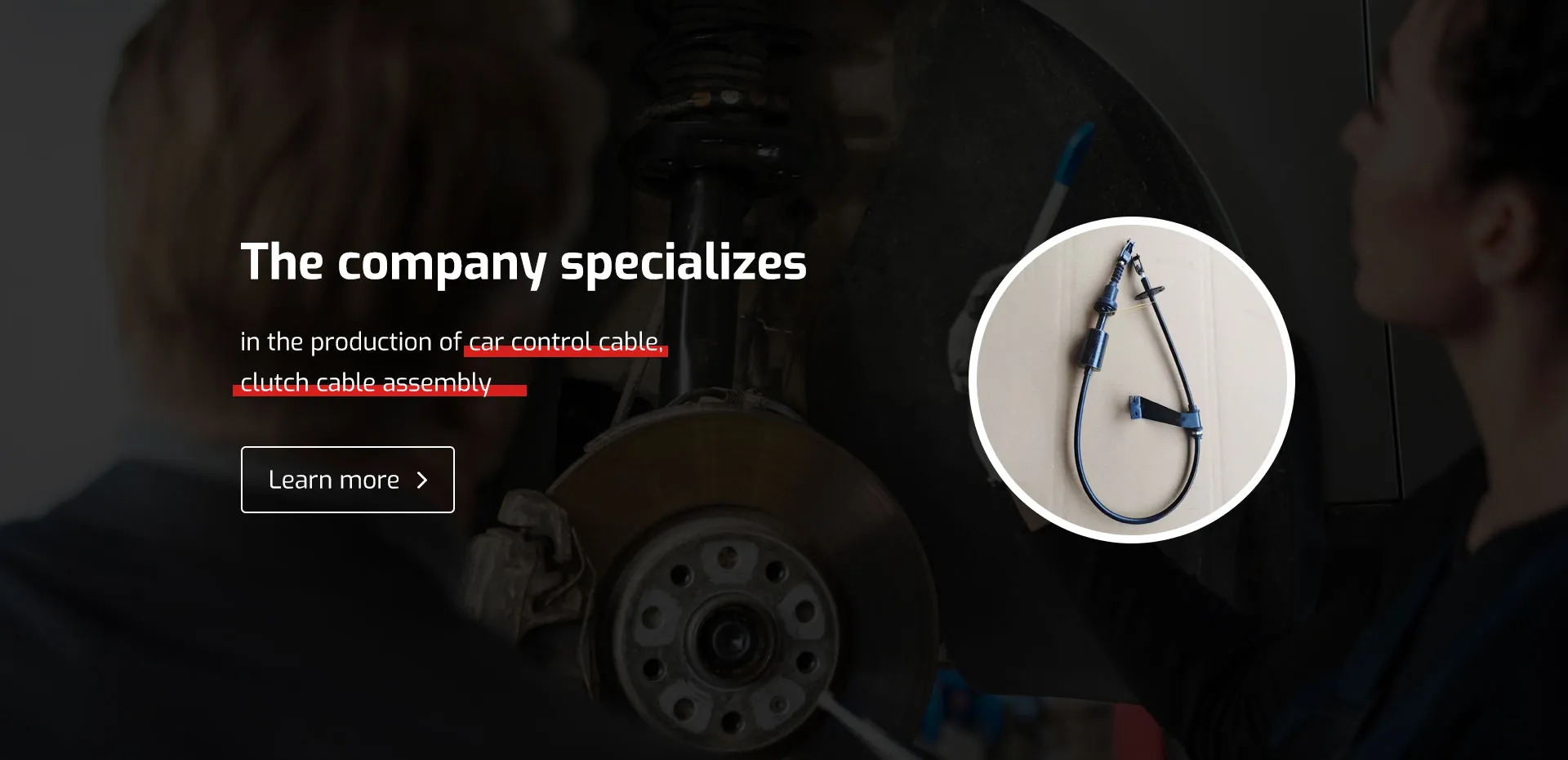gear shift cable
Understanding Gear Shift Cables The Unsung Heroes of Automotive Performance
Gear shift cables are a crucial yet often overlooked component in the functioning of manual and automatic transmission systems in vehicles. These cables play a significant role in ensuring smooth and accurate gear transitions, directly impacting the overall driving experience. This article delves into the importance, functionality, design considerations, and maintenance of gear shift cables.
Importance of Gear Shift Cables
In a vehicle, the gear shift cable connects the gear shift lever in the cabin with the transmission system. When a driver shifts gears, the movement of the shift lever is transmitted through these cables to the transmission, facilitating the appropriate gear change. This mechanical link is vital for enabling the driver to control speed, acceleration, and overall performance of the vehicle efficiently.
Failures in gear shift cables can lead to a variety of issues ranging from difficulty in changing gears to complete transmission failure, which could render a vehicle inoperable
. Hence, understanding their importance is crucial for both automotive enthusiasts and everyday drivers.How Gear Shift Cables Work
The operation of gear shift cables can be likened to that of a series of pulleys and levers. The basic concept involves the application of tension. As the driver moves the gear shift lever, this action applies force through the cable, which in turn pulls or pushes the transmission linkage to engage the desired gear.
In automatic transmissions, the process is slightly more complex. Although many modern automatic systems are increasingly incorporating electronic components, traditional systems rely on cables to provide tactile feedback and precise control over gear changes. This ensures that regardless of the complexity of the transmission system, the driver's intentions are accurately conveyed to the vehicle's mechanics.
Design and Material Considerations
gear shift cable

Gear shift cables are typically made from durable materials designed to withstand significant wear and tear. Inner cables are usually constructed from high-strength steel, which is coated to prevent rust and corrosion. The outer casing, often made from flexible plastic or rubber, protects the inner cable from environmental elements, mechanical damage, and friction.
Moreover, the design must allow for flexibility and movement without compromising strength. The routing of the cables within the vehicle is also carefully planned to avoid sharp angles or excessive bends, which could lead to friction or kinking, ultimately affecting performance.
Common Issues and Maintenance
Like any automotive component, gear shift cables are not immune to wear and tear. Common issues include fraying, corrosion, or complete breakage. Symptoms of a failing gear shift cable may include difficulty in shifting gears, a loose gear shift lever, or unusual noises while shifting.
Regular maintenance can help prolong the life of these cables. Checking the cables for any signs of wear or damage should be part of routine vehicle inspections. Ensuring that the cables are properly lubricated and free from debris can also prevent premature failure. Replacing old or damaged cables promptly can help avoid more significant transmission issues and costly repairs down the line.
Conclusion
Gear shift cables may not garner as much attention as other automotive components, but their functionality is vital for the safe and effective operation of vehicles. As the link between the driver’s commands and the vehicle’s performance, they play a fundamental role in the driving experience.
Whether you’re a dedicated car enthusiast or a casual driver, understanding the importance and maintenance of gear shift cables can empower you to take better care of your vehicle. By ensuring that these unsung heroes of automotive performance are in good condition, you can enhance your driving experience and maintain the reliability of your vehicle for years to come.
-
Workings of Clutch Pipe and Hose SystemsNewsJun.04,2025
-
The Inner Workings of Hand Brake Cable SystemsNewsJun.04,2025
-
The Secrets of Throttle and Accelerator CablesNewsJun.04,2025
-
The Hidden Lifeline of Your Transmission Gear Shift CablesNewsJun.04,2025
-
Demystifying Gear Cables and Shift LinkagesNewsJun.04,2025
-
Decoding Clutch Line Systems A Comprehensive GuideNewsJun.04,2025
